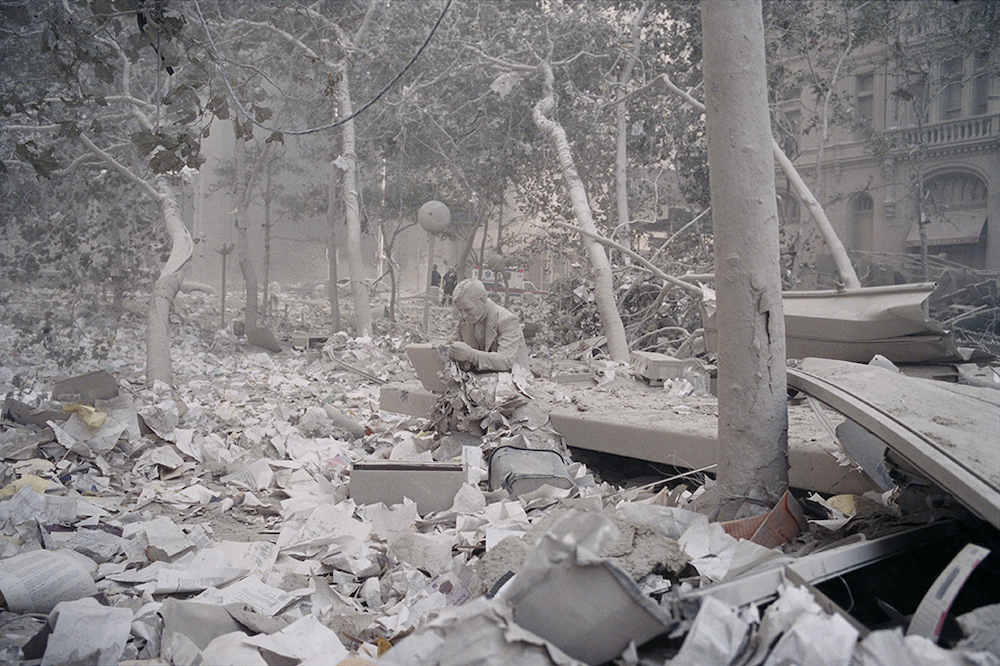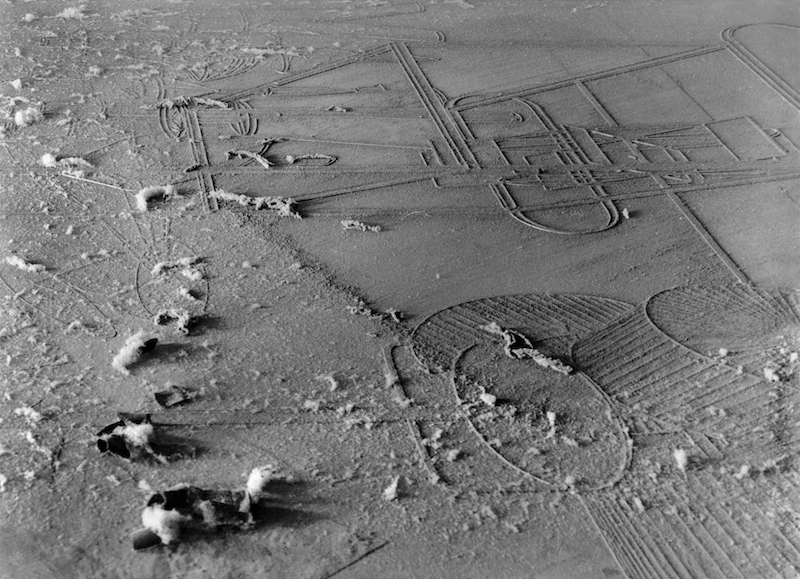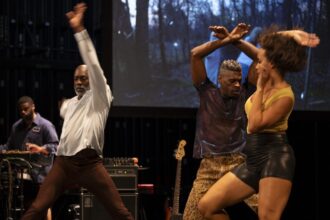On the occasion of the opening of a Handful of Dust, at the Polygon Gallery in North Vancouver, visiting curator David Campany shared an anecdote about how he once found himself in conversation with Susan Sontag at the gallery bookstore where he worked. Sontag asked him, “What’s wrong with my book on photography?” He responded, “Well, it doesn’t have any pictures in it […].” On Photography, rather than “on photographs,” as Campany implied, permitted Sontag a more flexible terrain onto which to map the development and proliferation of the medium under capitalism. But there was no significant image on which to hook her argument, whereas photography theorists tend to attach their claims to a photographic exemplar in an attempt to simultaneously retread photography’s historical path and arrive somewhere new. Is there a way to revitalize ideas that have been circulating for almost two centuries – to dust off old theory, perhaps placing one’s attention on the dust itself?
With carte blanche to curate his “dream” exhibition at Le Bal in Paris, Campany, an eminent figure in contemporary photography, claimed that a Handful of Dust came together, conceptually, in a matter of days. But the groundwork, it could be argued, had been underway for two centuries. Comprising a vast selection of vernacular and artistic photography spanning the mid-19th century to the early 2000s, a Handful of Dust shows us both the pictures and the scrap, debris, and particles that our eyes generally train against (and that Photoshop handily removes). Dust, Campany argues, is photogenic. But it’s also methodologically fruitful. Its central role in this exhibition is akin to what philosopher Hubert Damisch took up in relation to the /cloud/: the cloud as a theoretical object exposing the limits of linear perspective within the medium of painting. Dust might function similarly for the medium of photography, delineating the document and the artwork while reaffirming how the photograph is at once object and archive. As Campany writes in the exhibition catalogue, “So let us reflect upon this photograph of dust, keeping open the idea of ‘the document beneath’.” Dust performs here as a theoretical apparatus that exposes the paradoxical nature of photography: that is, as viewers, we cannot stay trained on the photographic surface for very long before something lurking beneath incites a visual excavation of its subject.
a Handful of Dust deploys specific photographic images to trace a lineage of theoretical debates surrounding photography since its invention/discovery. These include its status as a document or object, its indexical nature, and its role in documenting other artworks. Photography, Campany argues, “takes in everything, all at once,” a condition of the medium. His exhibition seems to operate as a curatorial exercise in upending this claim: to get all of photography into the exhibition space, organized around a single significant image’s prompt. That central image is Dust Breeding (1920), a photo-document by Man Ray of a large plate of glass in Marcel Duchamp’s studio, what would go on to become the transparent vertical base of Duchamp’s The Large Glass (1915-23). Man Ray, Campany explains, was often frustrated by the activity of photographing other people’s artworks, which he did for the money. The trompe l’oeil photograph – which reads visually as an aerial view of crop circles before it reads textually as dust collecting on a glass surface – confuses not only authorship, but also the dual status of the object as document and artwork (a deliberate confusion and, indeed, when first published in the Surrealist journal Littérature in 1922, the image was accompanied by the title View from an aeroplane). A similar phenomenon is at play in Eva Stenram’s Per Pulverem Ad Astra (2007), in which Stenram, working from pre-existing photographs of Mars, cropped the images in Photoshop and brought them to a London developer who could transfer them from digital to analogue, resulting in 35mm negatives that she then distributed around her flat and left to collect dust before their handprinting.

Robert Burley, “Implosion of Buildings 65 and 69 #2, Kodak Park, Rochester, New York 2007,” 2007. Courtesy the artist and Stephen Bulgar Gallery.
Although Campany’s selections invite a kind of visual excavation of the photographic surface, just when we think we have broken through the surface, we are presented with more surfaces – an experience akin to opening a door onto a brick wall, an unending quest to break through to the other side of an impenetrable object. What, then, can the photographic apparatus reveal to us about surfaces themselves? Gerhard Richter’s 128 Photographs of a Painting (1978) engages the horizontality of the Man Ray/Duchamp photograph, laid out like a table or a large Expressionist canvas, and organized into a grid of 128 black-and-white photographs of magnified paint on canvas. The horizontal layout recalls Harold Rosenberg’s articulation of the canvas as an arena in which to act. As Campany notes, too, Richter connects with the central role photography played in society at the height of Abstract Expressionism (we might think here of how Jackson Pollock’s paint slinging, in the cultural imaginary, cannot be separated from Hans Namuth’s photo-documentation of Pollock’s process, nor the artist’s rapid ascent). Robert Burley’s Implosion of Buildings 65 and 69 #2, Kodak Park, Rochester New York (2007), whereby a crowd of onlookers witness the demolition of Kodak’s processing facilities, signals dust’s inextricable relationship to the built environment, and dust as metaphor for beginnings and endings – here, the end of photography’s analogue.

Installation image of “a Handful of Dust,” including Gerhard Richter at center. Courtesy the Polygon Gallery.
The notion of the significant image is implicitly subjective. In this, Campany strides alongside earlier photography theorists, perhaps mostly famously, Roland Barthes, whose Camera Lucida expanded from a single photographic image. However, in Barthes’s case, the photograph was withheld from view from his readers. He explained how the image that so pierced him could not have the same effect on others; we are each bound to our own affective attachments, experiences, and associations. An attempt to forge a new way through the enduringly perplexing nature of photography exposes the futility of the task at the same time as it reignites a fascination with the medium. Every image has the potential to be significant, but some images are more significant than others. This is evidenced, in the exhibition, in Jeff Mermelstein’s Statue (Double Check by Seward Johnson), September 11, 2001 (2001). Describing the photojournalistic image feels overwhelming, a feeling mirrored in the overwhelming scenario it attempts to capture: a dusty air shown recessing into the background. A park square completely filled with paper debris. Trees bending backward into the recessed space, where two paramedics can be seen standing in front of their van. At the center sits a lone figure, this statue, dressed in business attire, his briefcase flipped open on his lap, and spilling yet more paper. Like the rest of the objects in this apocalyptic scene, the figure is completely covered in dust. Where words fail, photography takes over, and dust as an abstract entity takes on a corporeal form.
As Campany explained, “Inside … you just feel like a bunch of curiosities and doubts. An occasion like this is just a chance to give those doubts some kind of shape.” A curatorial premise built on doubt and comprised of dust would suggest a weak foundation; instead, in its execution, a Handful of Dust offers a Big Bang theory for the history of photography. Where once there was nothing, suddenly, there was everything. This methodological ephemerality permits a singular image to unfold in countless directions, at once bringing into view the infinitesimal particles that make up the world and beyond, ephemeral and enduring, nothing and everything, all at once.




























